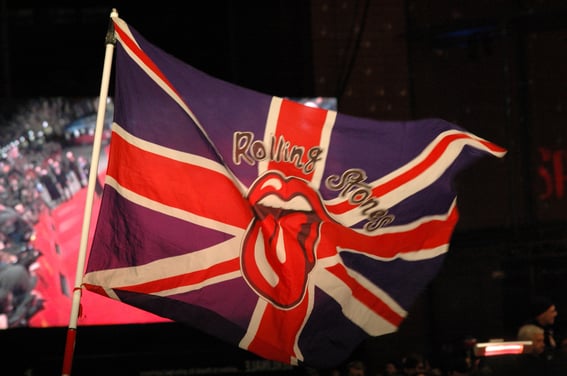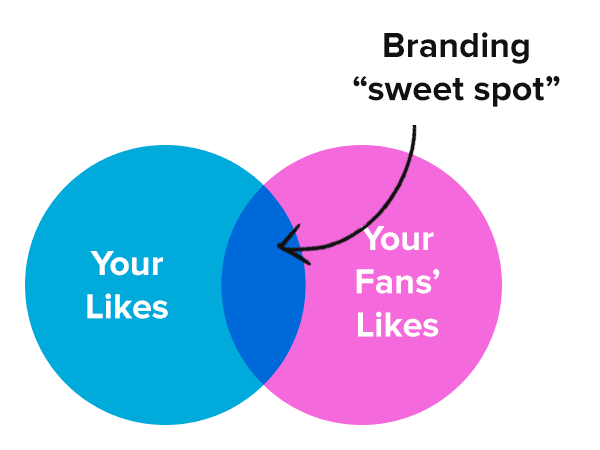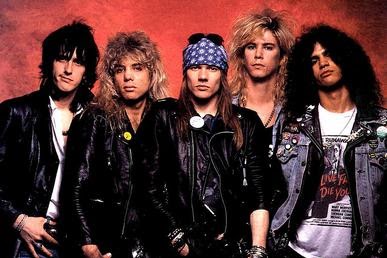
What do you think of when you think of the Rolling Stones? Mick Jagger cavorting on stage? The opening riff on “Satisfaction”?
Or, like many others, do you think of the instantly recognizable “tongue and lips” logo?
The Rolling Stones logo is a branding coup, an image so iconic that it placed at the top of a poll of the world’s most recognizable T-shirt designs (even beating the Nike “Swoosh”). While the Stones are obviously a lot more than this logo, it does offer instant recognition, even to non-fans.
Building a powerful brand such as this is not an overnight process. But as an indie musician, investing in branding can have an incredible long-term payoff.
In this guide, we’ll cover the core elements of branding and how to use them to build your own brand.
Branding is About Culture
When most people think of branding, they think of superficial elements - logos, fonts, and visual design.
But branding, at its very heart, is about cultural production. Every brand is essentially trying to persuade you to believe in certain ideas, values, and aesthetics. I like to think of it as the “unsaid language” of commerce and culture.
For example, consider these three text logos for a hypothetical band, “The Producers”, below:

Even though they use the same text, you’ll find that each logo evokes a different idea in your mind. The first one might make you think of some Scandinavian EDM artist. The middle one looks like the logo for a singer-songwriter. While the third logo would be at home in a hard rock or metal band’s touring van.
These ideas resonate with you because they’re essentially leveraging your cultural knowledge. Minimalism, for instance, is a distinctively Scandinavian aesthetic movement. You already know it thanks to the decades of architecture, movies, music, and brands you’ve already consumed.
Hence, when you see a text logo with a minimalist font, you think of Scandinavian EDM, not “country music star”.
Leveraging such cultural knowledge is one of the core elements of branding. If you want your fans to feel a certain way, use the cultural biases they already have. Every branding decision you take must be informed by this fact.
With this out of the way, let’s look at the process for creating a powerful brand.
How to Create Your Brand
Branding is the process of creating an idealized image that both you and your fans can relate to. This is an inherently introspective task. It’s also far more nuanced than simply getting a logo and website made.
Let’s dive into the details below.
1. Understand Yourself and Your Audience
In an ideal world, you’d just create incredible music and have your fans love you for it.
But in the real world, you know that’s not always the case. Music, as I wrote earlier, is innately tied to culture. Fans who go to a punk concert expect the music and the band’s brand to be a certain way.
The true magic happens when you can create a brand that:
- Relates the likes, dislikes, and quirks of your music and personality
- Relates the wants, desires, and expectations of your target audience

This is a tough balancing act. Swing too much on one side and you’ll have an inauthentic brand. Go too far the other way and you’ll be unappealing to your audience.
Start with some introspection. Ask yourself:
- What are some other musicians who create music similar to mine? How do people describe them and their brands?
- What is the cultural discourse around my genre and type of music? What visuals, fashion choices, etc. are expected from my music type?
- What do my fans want when they listen to my music? What is the central emotion? Fun? Nostalgia? Love? How can I amplify this emotion?
- What do I want from my music? How do I want people to see me?
For instance, if you have a lot of ‘80s-style guitar riffs, your core emotion might be ‘nostalgia’. Any visual that uses retro themes would amplify this emotion and leave a bigger impact.
Similarly, fans expect punk rock to have a few unifying elements, both within and outside music. Playing up or subverting these expectations can help you create a compelling brand (more on this below).
The key is honesty. It’s much better to have an authentic brand that 1,000 fans are passionate about than a dishonest brand that 100,000 people are indifferent to.
2. Leverage Genre Expectations
As a musician, you also have the burden of dealing with genre expectations. For better or for worse, fans expect genre artists to adhere to a certain aesthetic. Metal bands can’t dress up as boy bands - except ironically.
Some might find these genre expectations incredibly restricting. But for indie musicians, they offer an easy way to create a passable brand. Think of it as visual shorthand. You don’t have to tell people that you’re a “rock band” - dressing up in denim and leather with a guitar slung over your shoulders is enough.

You wouldn’t mistake this band for an acapella group (Image source: Wikimedia)
When you’re creating your brand, think of what people expect from your genre. Ask yourself:
- How can I use elements from this genre to quickly indicate my music type?
- How can I subvert genre conventions?
- What genre conventions can I amplify and adopt to amplify the impact of my music?
3. Analyze and Understand Other Artists’ Brands
One way people understand new ideas is to relate them to existing ones. Nowhere is this more common in music. Fans routinely describe a new artist in relation to another popular artist, but with some difference - “He sounds like Eminem, but with Kanye-style hooks”.
So when you’re creating your artist brand, it’s a good idea to understand what your successful peers are doing.
Make a list of 5-10 of your favorite independent artists. Go through all their publicly available media, including their:
- YouTube videos
- Social media handles, especially Instagram and Twitter
- Streaming site accounts such as Spotify, Soundcloud, Mixcloud, etc.
- Album art
- Website
- Newsletter (if any)
- Media coverage, especially interviews and feature stories
Take careful note of the following:
- Is there a unifying aesthetic across their entire presence? If yes, how would you describe it?
- What colors, visuals, and design elements do they use? How does it relate to their genre?
- How do they represent themselves? Pay careful attention to their clothing choices, hairstyles, and even body language
Remember that there is nothing truly accidental about how successful artists represent themselves and their brands. Every publicly released image, tweet, and social media post is aimed at amplifying the brand.
Understand this and you’ll be halfway to building your own powerful brand.
Bring it All Together
So far, I’ve covered the fundamental “why” of branding. This introspection might not be actionable, but it cues you into the heart of your music and your brand.
You can take things a step further and create formal documents to manage your branding - just as an agency would. You can create a mission statement, put together a moodboard, or even develop a project plan to organize your marketing activities.
However, for most indie musicians, this would be unnecessary. A simple document that helps you keep your thoughts organized is more than enough. What’s more important is that you truly understand your music, its audience, and the complex interplay of culture, commerce, and art that makes an artist brand.
If you can do that, you’ll know what it takes to build a powerful brand.
About the Author
Ryan Harrell is an ex-marketer, part-time DJ, producer, and occasional artist manager. He used to sell software for B2B companies and produce part-time. Now he’s reversed that relationship and helps artists make and market their music better at MIDINation.






